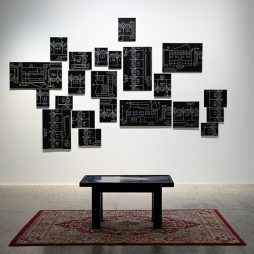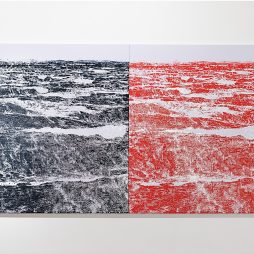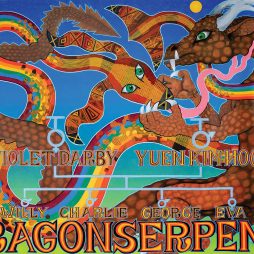REVIEW | Zen and the Void: the spiritual quest of Royston Harpur
Transforming the space with a quiet grandeur evocative of contemplation, a large reclining Buddha in gold leaf captures your attention on entering Mudgee Arts Precinct gallery. Lining the walls Royston Harpur’s (1938–2023) refined minimalist works seemingly respond with an energy that is as explosive as it is contained. Delicately shaded, nuanced, and bold, in a restrained palette of greys, black, and whites, the discourse with Buddhism and the discipline of calligraphy—in Harpur’s hands a form of action painting—is unmistakable.
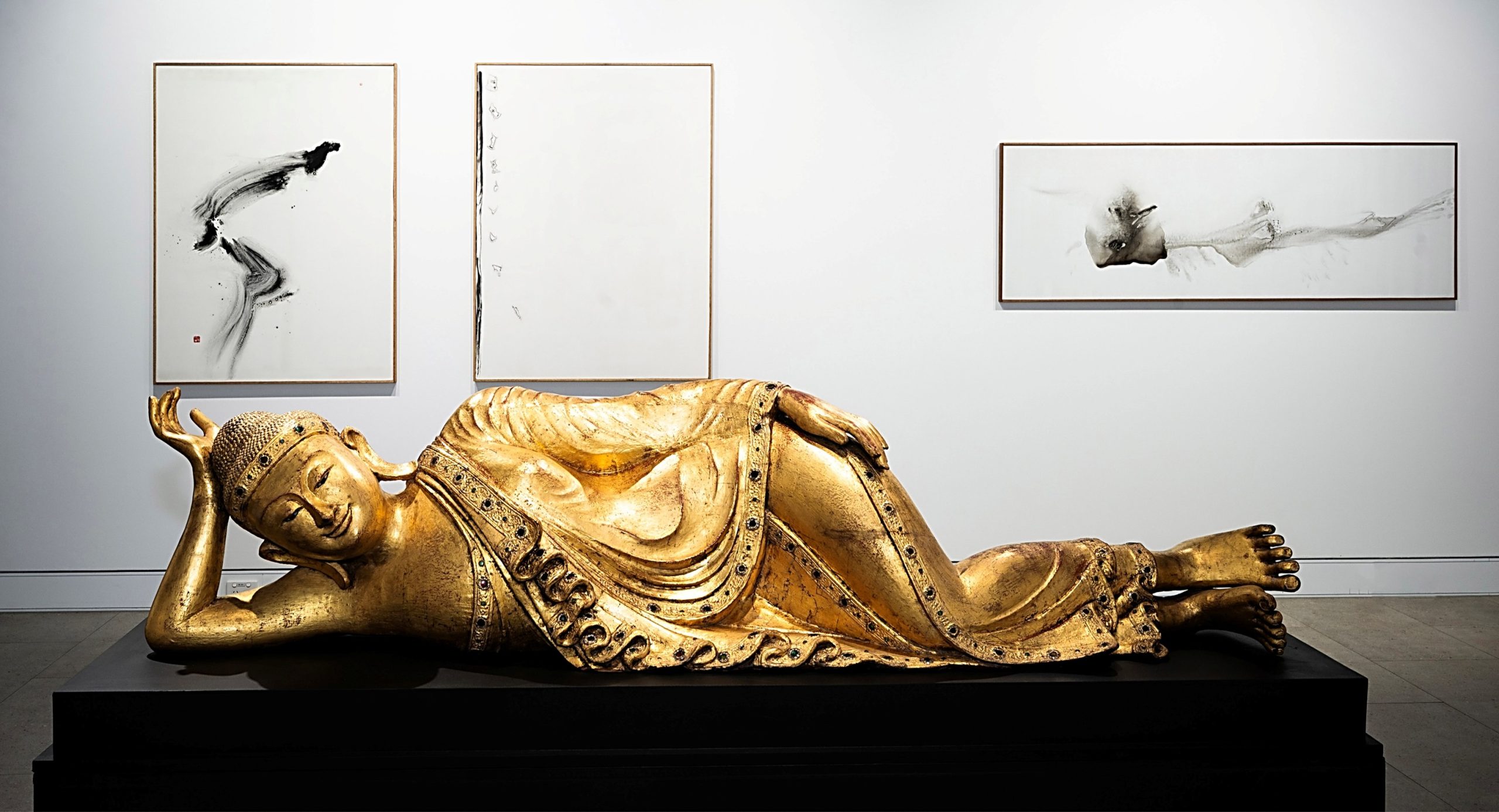
Co-curators and longtime friends Helen Hyatt-Johnston, Brad Buckley, and Noel Thurgate and Gallery Curator Lizzy Galloway, selected the Buddha from Harpur’s extensive collection of Ch’an (Zen) Buddhist artefacts (hundreds of scrolls, paintings, sculptures, and writings) by way of homage to Harpur’s devotion to Ch’an Buddhist principles, both as a way of being and mode of practice. Altogether Harpur’s personal journey is extraordinary.
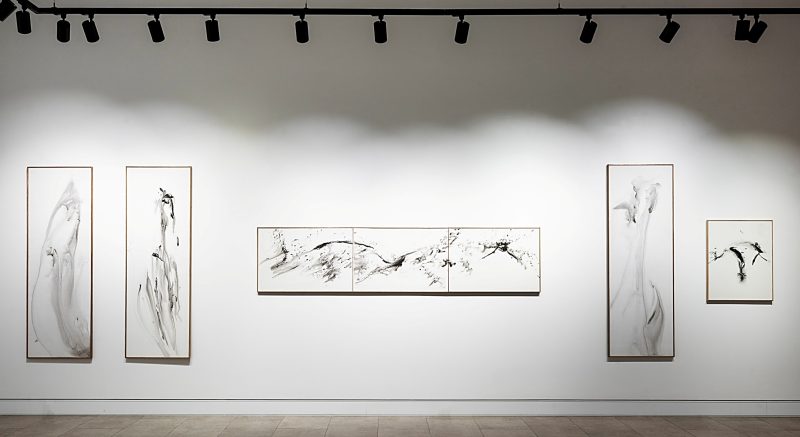
Installation view details, ‘Royston Harpur: A Painter’s Painter,’ 2025, Mudgee Arts Precinct, Mudgee. Photographed by Amber Hooper.
Born in the interwar years in 1938, as a young man Harpur was at the forefront of the Australian modernist abstraction movement. After a stint in London in the swinging sixties, where he experienced the new wave of American and British avant-garde art, including the first British shows of Mark Rothko, in 1966 Harpur became a co-director of Sydney’s Central Street Gallery. Not long after, he contributed one of the three essays to The Field catalogue, the celebrated and now legendary exhibition held at the National Gallery of Victoria in 1968. As relevant today as then (recently restaged as The Field Revisited in 2018), The Field consolidated the Colour Field abstraction movement in Australia, foregrounding bold, hard-edged abstract form and intense colour, often delivered in monochrome.
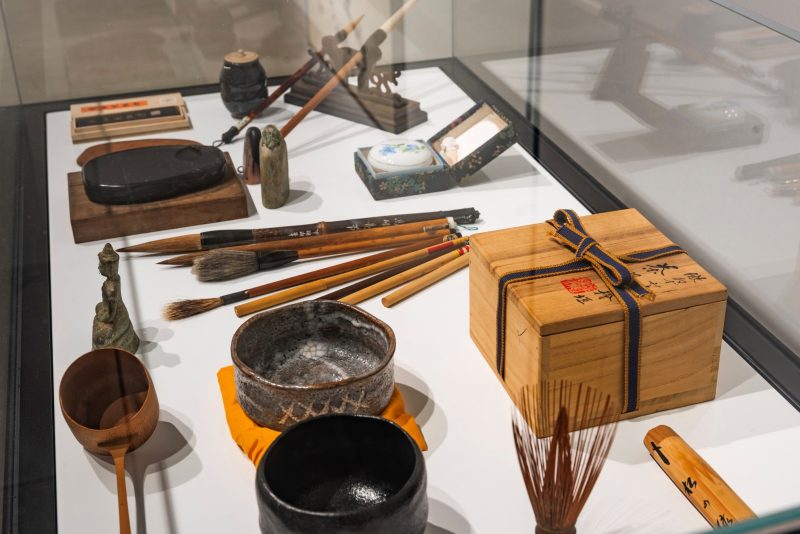
Installation view details, ‘Royston Harpur: A Painter’s Painter,’ 2025, Mudgee Arts Precinct, Mudgee. Photographed by Amber Hooper.
That exhibition notably endorsed the work of a select forty of Australia’s younger generation of artists as representative of a new national movement. The more astute of readers did not, however, fail to note a sharp edge of critique in Harpur’s assessment. Opening thus with carefully calibrated and generally favourable remarks, “What the exhibition does indicate, and this is possibly one of the most exciting events to take place in our short art history, is an intelligent Academy. . . in its beginnings, but very firmly established.” Harpur went on to describe this “intelligent Academy” in terms that were not exactly praiseworthy nor anticipatory of a radical shift in the painterly tradition representative of the nation. He experienced the works as “carefully controlled, technically correct and safe.”
In short, despite intelligent production, Harpur found the works conformist and affirmative of a replacement academy. Unlike the movement’s predecessors, the American abstract expressionists of twenty years prior, Harpur continued—with rare and unusually daring critical engagement for an “official” catalogue essay—to describe his contemporaries as more concerned “with the problems of the academy” than with “the nature of art.”
And, shortly afterwards, he made his departure.

Installation view details, ‘Royston Harpur: A Painter’s Painter,’ 2025, Mudgee Arts Precinct, Mudgee. Photographed by Amber Hooper.
Visiting painter and performance artist Shotei Ibata had seen Harpur’s exhibition at Melbourne’s Gallery A in 1970 and invited him to Japan. There, through his long association with Ibata, who became a close friend and mentor, Harpur embraced Ch’an (Zen) Buddhism and the calligraphic line, learning the art of voiding the mind in order to open himself to a state akin to the “relation to the Absolute” he had admired in Barnett Newman’s 1948 essay “The Sublime is Now.” In fact, the bulk of Harpur’s essay on The Field had consisted of a profound charting of Newman’s spiritually driven idea of the sublime, the very aspect that Harpur found lacking in the artworks of The Field.
In effect, paralleling poet Ezra Pound’s imaginary excursions into Cathay [China] in the early twentieth century, Harpur’s many sojourns in Japan embodied a form of spiritual homecoming. The excellent limited-edition catalogue accompanying the exhibition contains a fine analysis by Rex Butler of Harpur’s transformative vision and the particular technique of Mushin or “no-mind-ness” he developed through his Ch’an Buddhist approach to Japanese calligraphy.

Installation view details, ‘Royston Harpur: A Painter’s Painter,’ 2025, Mudgee Arts Precinct, Mudgee. Photographed by Amber Hooper.
Also included in the catalogue, Harpur’s conversation in July 2013 with Bradley Hammond of Orange Regional Gallery, expands upon how in this “no-mind situation” paradoxes are resolved. Certainly, this was my experience of the works Rainvoid, 1968, Encounter, 2002, Crossing the bridge into the night, 2012, in which the contradictions of stasis and action, chance and reflection, manifested in moments as fleeting as they were enduring. And the “Brief Biography” by Paul McGillick underscores Harpur’s deep affinity with the processes of chance, randomness, and accident that he had earlier encountered in London through the choreography of Merce Cunningham and the compositions of John Cage.
Taken together with the exquisitely produced catalogue, this important and long overdue exhibition underscores Harpur’s unique contributions to the field of action painting and, alongside Ian Fairweather and Yvonne Audette, to the turn to the East within the national story of Australian art. That said there still remains much to be done in terms of Harpur scholarship, his legacy as a reviewer and writer on art is yet to be fully researched.
EXHIBITION
Royston Harpur: A Painter’s Painter
26 September – 7 December 2025
Mudgee Arts Precinct, Mudgee
Images courtesy of the artist’s estate, Silversalt, Amber Hooper, and Mudgee Arts Precinct, Mudgee
This article was first published in Artist Profile Issue 73

